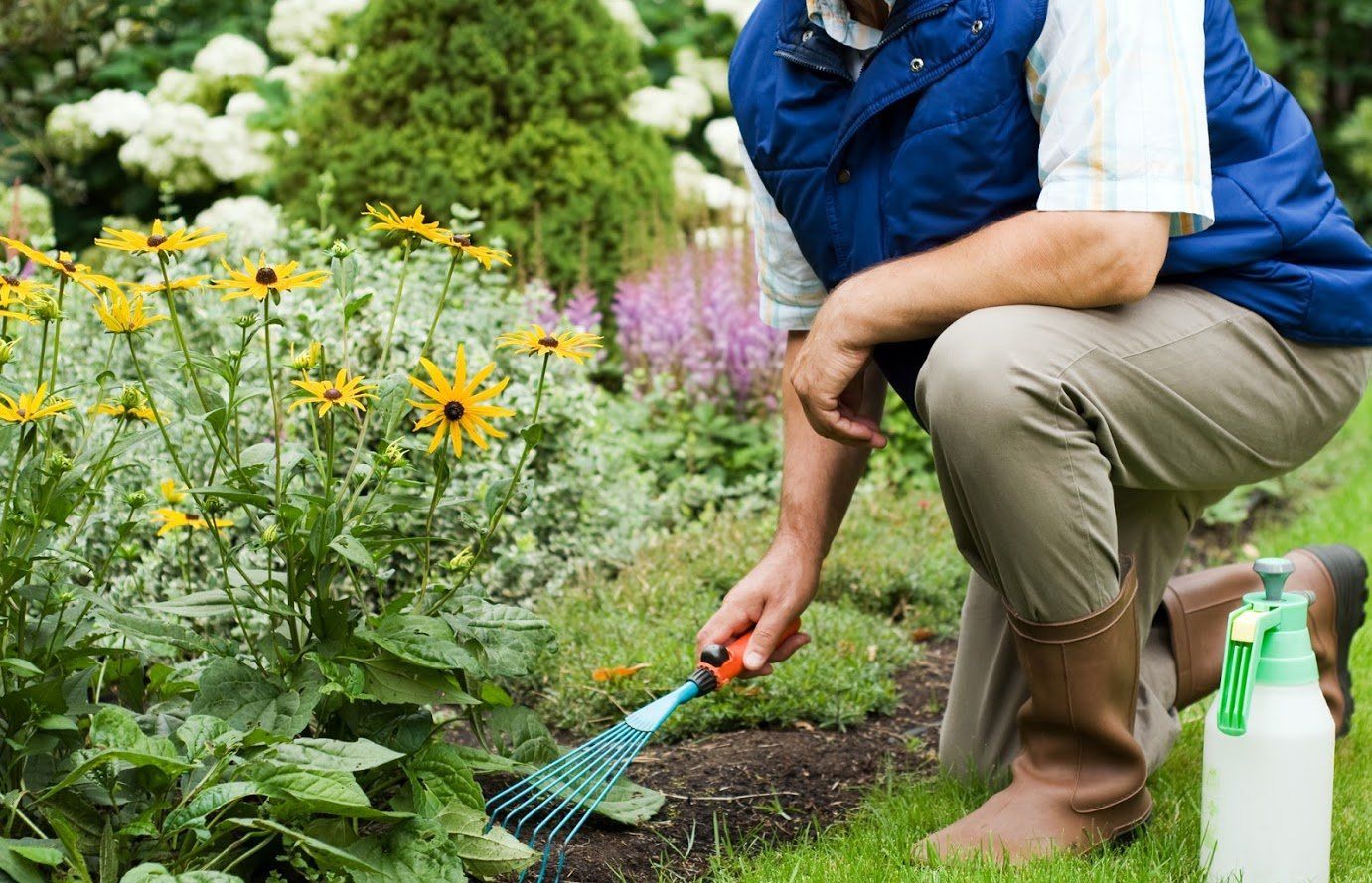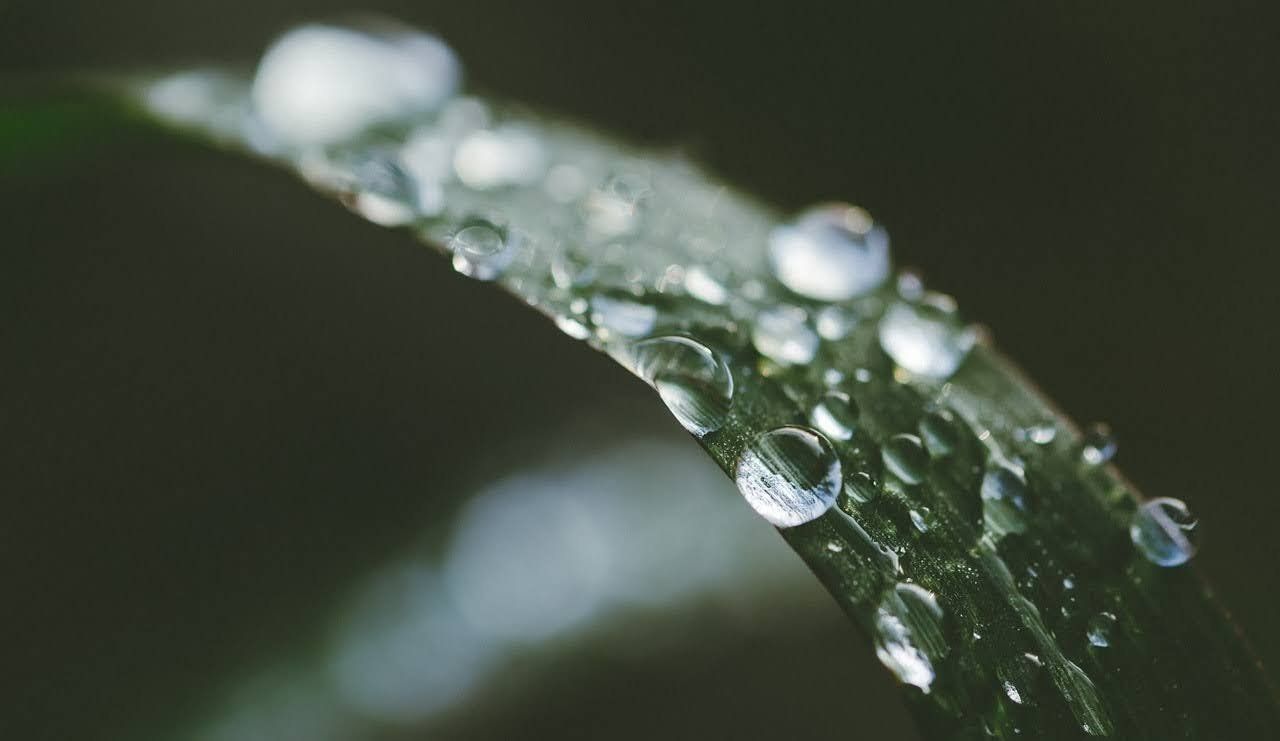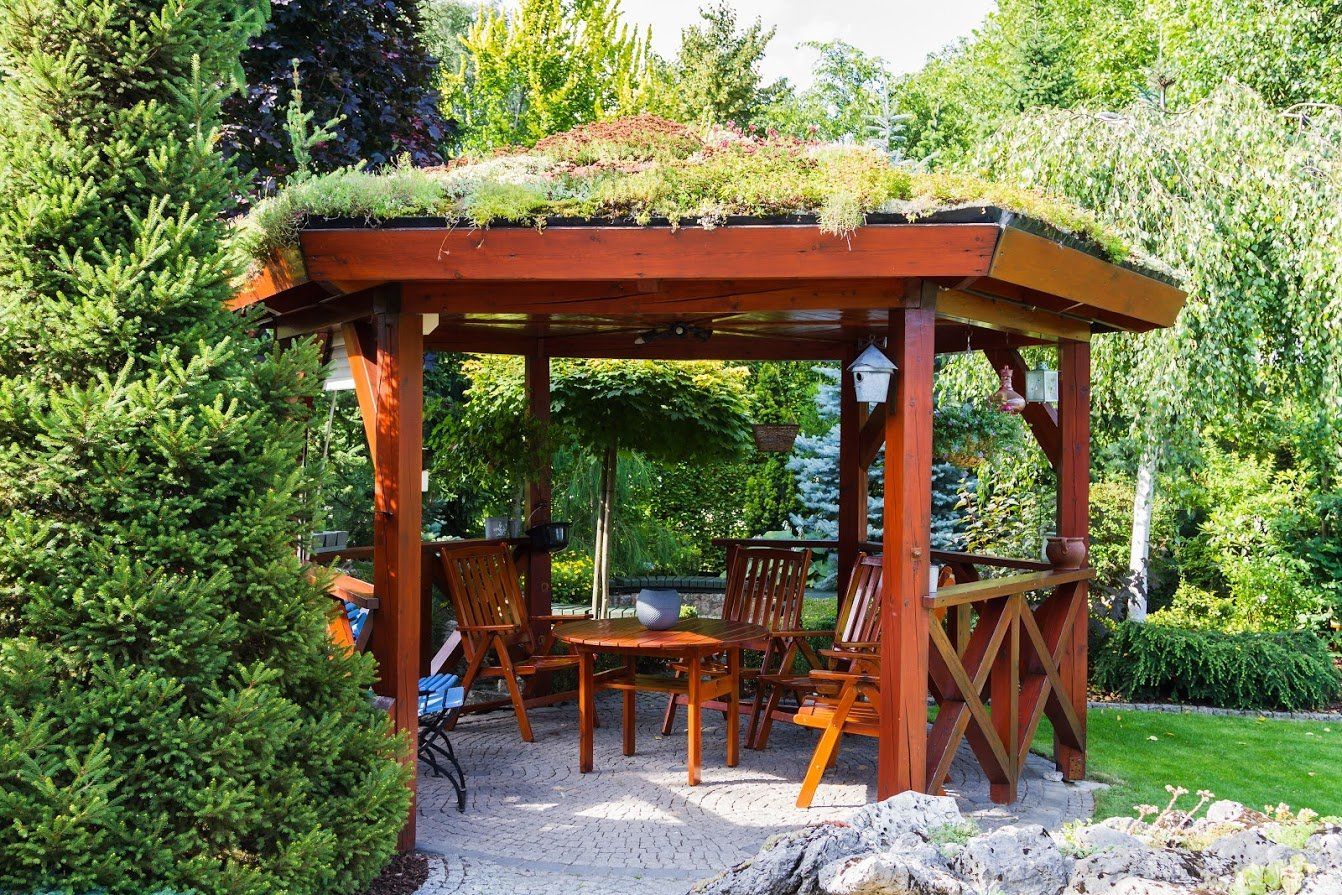
As the holidays approach, spruce up your yard, garden, and greenspace with some festive landscape ideas. Plus, some of these suggestions help preserve your property and prepare it for the winter months ahead. Give your home's landscape a lift with these holiday ideas.
Holiday Hardscapes
When the weather gets cold, focus on hardscapes to get your property ready for the holidays. Create festive flair with lighting. For example, change the color of your bulbs. Pull out holiday yard art, like figurines, fountains, or signage, and accent with hardy shrubs, topiaries, or small conifers. Keep it simple to bring more attention to the items and plants that you use.
Container Makeover
Make the most of what you already have by doing something fresh with your summertime containers and vessels. For your winter landscape, fill the pots that previously held your summer geraniums with cold-hardy conifers for a festive touch; replace your gone-by herb garden with a bed of straw and colorful glass holiday ornaments.
Wintertime Foliage
For year-round color in your garden and landscape, go with four-season perennials. Look for plants that offer foliage in the wintertime. You can determine when your plants will bloom by examining the plant's label and comparing it to a hardiness zone map to find the best options for your region.
Potted Poinsettias
What would the holidays be without potted poinsettias near your front door, on the porch, or in a window? Poinsettia plants are a common gift and the foundation for numerous holiday ideas. Try grouping smaller plants in a variety of different pots, or choose large, bushy plants to serve as a focal point of the home.
For best results, position your plant inside near a warm, sunny window, or take it outside as long as the temperatures aren't freezing cold.
Festive Mailbox
Don't forget to do something special with your mailbox, as this is often the first glimpse that visitors have of your property when visiting over the holidays. Embellish and adorn the mailbox with greens, boughs, and garlands that are cohesive with your holiday landscape. Secure these decorations with floral wire.
Versatile Wreaths
You can't go wrong with wreaths, but try something out of the ordinary this season. Go with cedar instead of evergreen or pine instead of balsam. Decorate with elements found in nature, like pine cones and berries, or go with weather-resistant baubles and metallic beads that match your overriding holiday themes.
Your landscaper will be able to hang and suspend wreaths in tricky places, like upstairs windows, eaves, or other precarious positions with the use of equipment such as a cherry picker.
Fresh Garland
Talk to your landscaper about adding fresh garlands to your rails, eaves, and windows before the holiday. Between these garlands and your wreaths, your landscape will need little else to be festive and bright for Christmas. Recycle the garland after the holidays and use it to insulate your garden beds and plants all winter, or have the garland chipped and turned into mulch to be reused.
Finishing Touch
As a final finishing touch to your landscape, add mulch liberally around your beds, plants, trees, and borders. This will give your property a polished appearance after you have planted, potted, and decorated your landscaping. Bark mulch is widely available in a variety of types, colors, and sizes — choose what looks the most cohesive with the curb appeal of your home.
A well-maintained landscape says a lot about the people that live there, so clean and clear any debris or clutter from your yard and greenspace. Don't have time to bother? Arrange removal services from your Colorado Springs landscaping provider.
Get your yard and garden ready for the holidays with these wintertime landscaping tips and ideas. Work with the multi-faceted team at Affordable Services Inc. in Colorado Springs to deck the halls and get your home ready for this festive time of year.

the plants you decide to use in your home's landscaping. Choose native plants and avoid invasive species for the following reasons.
1. Less Need for Watering
Native plants are made to grow in the type of soil and the weather conditions common in the area that they're from. This means that you will be
less likely to have to spend a lot of time watering them in the summer when the weather gets a bit warmer. The more localized the plant's origin is, the less care it's likely to need.
2. Less Need for Chemical Additives
If you don't want to worry about harming children or pets by using a lot of chemicals in your landscaped areas, native plants are the best option.
Because they developed over time to grow in your area, they're typically well suited to the soil type and also may have built-in defenses against
the pests that typically live in the area.
3. Less Overall Maintenance
If you choose the right native species, you won't need to do as much to maintain your landscaping. Look for plants with a long life span that are
tolerant of a wide range of growing conditions. Smaller plants that grow densely help limit the need for weeding, and plants that don't spread well on their own will stay where you want them to.
4. Better Habitat for Other Native Species
Butterflies, birds, animals, insects, and other creatures native to an area evolve to live in certain areas based on the native plants and animals that are around them. Native plants help these creatures by providing food and shelter. These animals will have a harder time surviving if everyone plants species that aren't native to the area.
5. Less Likely to Be Invasive
You don't want to spread invasive species, as a large number of species on the endangered species list are there at least in part due to invasive
plants. These plants limit diversity, compete with native species, increase erosion, and decrease the overall quality of the land. They spread wide and far once they become established.
6. More Help Limiting Erosion
Plant native species of plants that love moisture in rain gardens to help absorb rainwater and keep it from forming streams of runoff that might
otherwise cause erosion and interfere with your landscaping. These plants also help to improve the overall water quality, as otherwise, the runoff would collect contaminants as it traveled.
7. Less Likely to Be Eaten by Deer
Deer may be nice to look at, but many gardeners bemoan the fact that these animals eat a lot of different plants and can destroy gardens or
landscaped areas. Choosing the right native species can limit this problem. Opt for a lot of plants that have rough or spiny textures or that give off smells the deer don't like.
The More Local, the Better
For the best results using native plants in your landscaping, look for plants that are native to your local community. Those native to the state are
better than those that are just native to the U.S. in general. Stay away from those that are most invasive, including kudzu, purple loosestrife,
Japanese Barberry, English ivy, Norway maple, and Japanese honeysuckle.
If you would like help with your landscaping project, contact Affordable Services Inc. today. We can help you choose the right native plants, add
walkways, and even put in retaining walls or help with other hardscaping projects.










